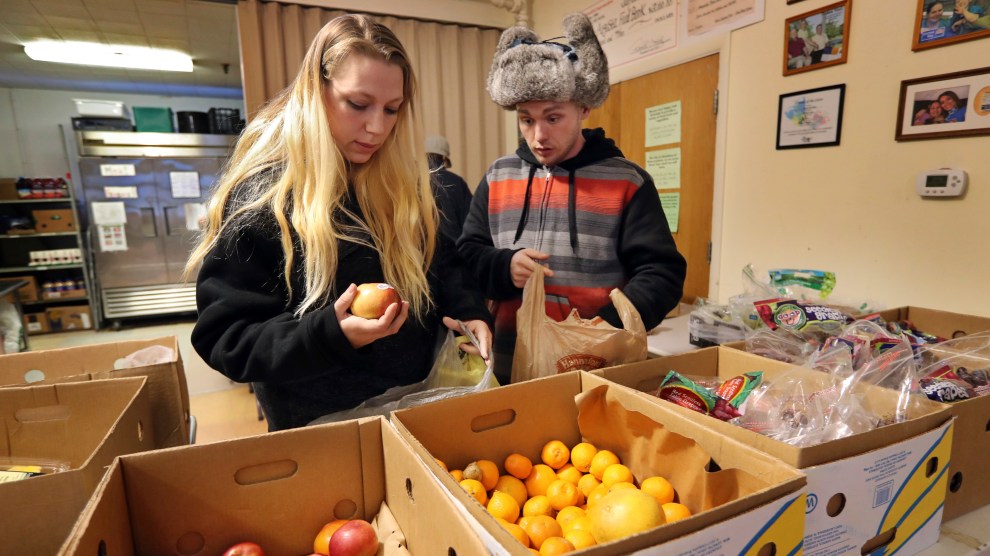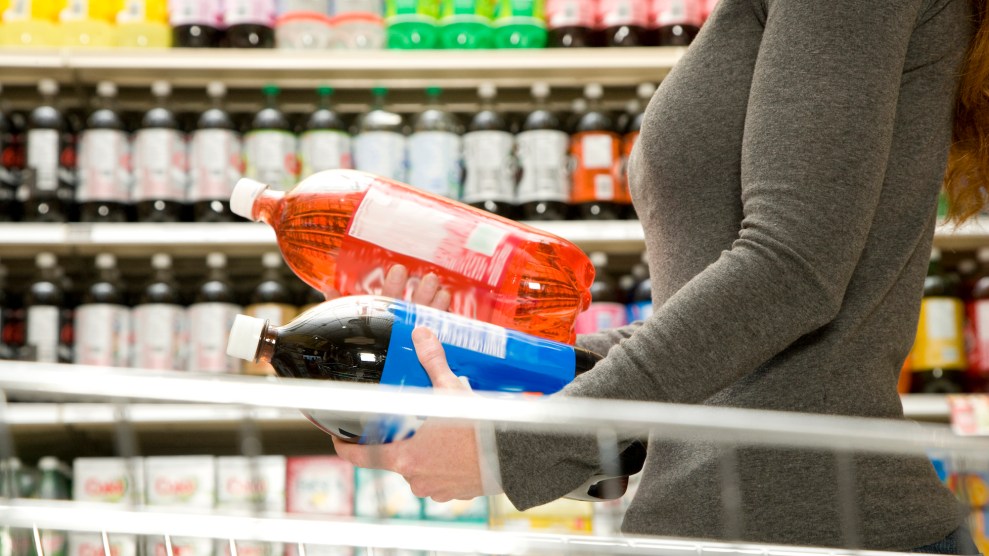
Robert F. Bukaty/AP Images
President Donald Trump unveiled his 2018 budget today, with more than $1 trillion in cuts over the next 10 years to government programs such as Medicaid, farm subsidies, affordable housing, and other anti-poverty programs.
The budget includes $193 billion in cuts over a decade to the Supplemental Nutrition Assistance Program (SNAP), or food stamps—25 percent of the program’s budget. About 44 million people benefit from food stamps in the United States, especially poorer states in the Southeast. For example, 1 out of every 5 people in Louisiana receive food stamps in a given month, according to a report by the Center on Budget and Policy Priorities.
Trump’s proposed cuts to food stamps will by and large hit the states that voted for him the hardest. Louisiana voted overwhelmingly for Trump, as did its Southeast counterparts Mississippi, Alabama, West Virginia, and Georgia. Out of the 10 states with the highest food stamp use by population, seven voted Republican in last year’s presidential election. (See more details in the list below.)
Other supplemental nutrition programs such as Women, Infants, and Children (WIC) will receive cuts, according to a budget leaked by centrist think tank Third Way. The program received $6.35 billion in 2017 and will receive $5.15 billion in 2018.
These maps show state populations that were enrolled in SNAP in a given month in 2016 and which states voted for Trump.
Seven of the 10 states that used food stamps the most in 2016 also favored Trump in the election:
- In Louisiana, 20 percent of residents relied on food stamps in 2016. Seventy-four percent of these SNAP recipients were families with children. Food stamp dollars put an estimated $1.5 billion back into the state’s economy that year. Louisiana voted red last November, with 58 percent of the vote going for Trump and 35 percent for Hillary Clinton.
- In West Virginia, 20 percent of residents relied on food stamps in 2016. SNAP purchases made with these food stamps pumped $499 million into the state’s economy last year. Just under 68 percent of West Virginians voted Republican last November.
- In Mississippi, 19 percent of residents relied on food stamps in 2016. Twenty-two percent of residents live below the poverty line. Just under 60 percent voted for Trump.
- In Alabama, 17 of residents relied on food stamps in 2016. Seventy-one percent of the state’s food stamp recipients are families with children, compared with 68 percent nationally. More than 60 percent of the state voted for Trump in 2016.
- In Florida, 17 percent of residents relied on food stamps in 2016, keeping 513,000 people out of poverty between 2009 and 2012. Florida’s race was close: 48 percent of votes went for Trump, 47.4 for Clinton (and 2.2 percent for Gary Johnson).
- In Georgia, 17 percent of residents relied on food stamps in 2016. Fifty-one percent of voters chose Trump.
- In Tennessee, 17 percent of residents relied on food stamps in 2016. Nearly 61 percent of voters opted for Trump in the presidential election.
This article has been updated.
















